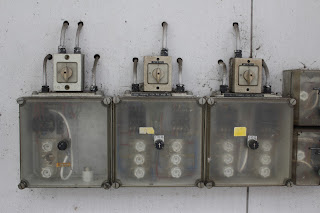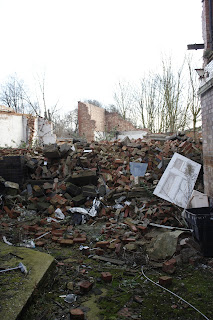So, after a return visit to All Saints Road, I got speaking to a chap who works at one of the garages underneath the one of the viaduct arches.
He told me that the middle area (that can be seen with a fence all the way round) was once a factory, whilst the terraced houses round the end where, up until recently occupied illegally by immigrant workers.
However, on bonfire night (5th November for the foreign followers), kids threw fireworks into to these already derelict buildings and set fire to them.
Taking queue from the
UrbanX photos, I donned my trusty camera an went forth into these empty houses (after work whilst still wearing shoes, shirt and tie).
Although I freely admit that these pictures don't have the same artistic quality as the UrbanX pictures, some interesting questions are raised by them. Firstly, on closer inspection of the old burnt out terraces, it would appear that people are still living in them (owner of the yellow Beetle, I think not). To add further levity to this assumption, the footprints in the snow. This route was no through route and only led to the old factory and the rear of these terraces, for all the rest of the area was fenced off. Secondly, why do they have such interest in the Kiwi bird (New Zealanders maybe?).
















































